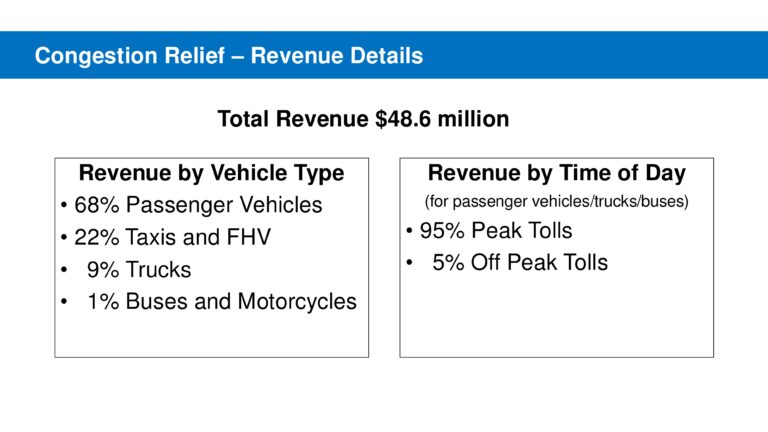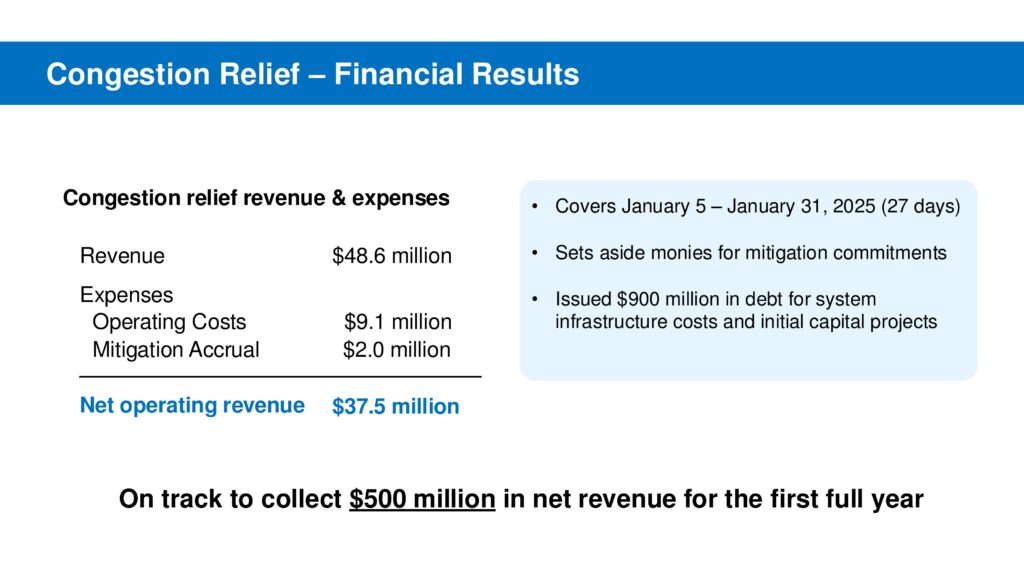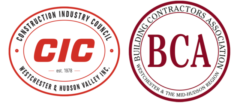Congestion Relief Plan Toll Revenues Beat Expectations, Ridership Goals
NEW YORK—Less than a week after President Trump and USDOT Secretary Sean Duffy revoked the federal government’s approval of New York City’s controversial tolling program, the Metropolitan Transportation Authority reported that the congestion relief plan through tolling is raising revenues above its earlier projections.
Since the first-in-the-nation program began on Sun., Jan. 5, through Fri., Jan. 31, tolls from the CRZ generated nearly $49 million last month, putting the program on track to generate the $500 million that the MTA initially projected. Published reports showed the MTA expecting approximately $40 million from the tolling program.

Total revenues of $48.66 million were generated from the tolling program:
• 22% came from taxis and for-hire vehicles ($10.6 million);
• 68% came from passenger vehicles;
• 10% from trucks (9%) and buses and motorcycles (85%).
In a breakout of the contributions in the various categories, 85% of non-taxi and for-hire vehicles revenue was generated from passenger vehicles; 15% from trucks, buses and motorcycles. The MTA reported that 95% of the revenue was generated during peaking tolling hours.
Expenses from the program include operating camera infrastructure and customer service amounting to $9.1 million with another $2 million for mitigation efforts, bringing the total to $11.1 million. The net revenue is $37.5 million, MTA officials reported.
Projects to Advance
“With an initial performance in line with projections, we can confidently move forward with projects that rely on funds from the Congestion Relief Zone,” said MTA Chief Financial Officer Kevin Willens. “We look forward to seeing similar results in the coming months.”
MTA Co-Chief Financial Officer Jai Patel said, “We are on track for the projected $500 million in net revenue, especially as we get into warmer months when traffic will increase, which provides confidence in the forecast. All indicators show the program is reducing traffic but also projecting the revenue to be on target.”
The revenue generated from the Congestion Relief Zone funds projects in the 2020-2024 Capital Program. Among the projects are improvements to make more stations accessible like Hollis and Forrest Hills Long Island Rail Road stations; installing modern signaling on Fulton St. line in Brooklyn and Liberty Avenue in Queens on the A and C lines; extending the Second Ave Subway into East Harlem; and the acquisition of new rolling stock, including 44 new dual-mode LIRR locomotives and zero-emission buses.
The MTA filed suit against the USDOT’s reversal and stressed that congestion pricing will remain in place during the litigation. New York Gov. Kathy Hochul has recently held talks with President Trump on the merits of the congestion pricing program. It is likely that the courts will decide the future of the program, the governor commented.

